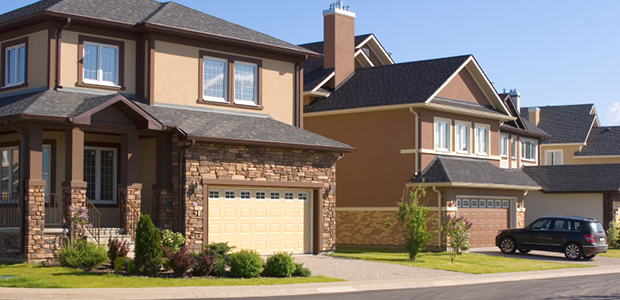What To Expect When Getting A New Roof
“You need a new roof.” Those are five words no one ever wants to hear. Having to put many thousands of dollars into something you can’t get daily enjoyment out of, like a new kitchen, is a huge drag. Of course, so is a flooded house!
If you’ve been told its time to replace your roof – or if that big, gaping hole over your living room is a dead giveaway – you may have misconceptions about the process or you may not have any idea how it works. Here’s what to expect.
It’s going to be louder than you thought.
Unless you want to make sure you can oversee the process from home – and you have a good pair of noise-cancelling headphones – you’ll want to plan to leave at least for day one (if it takes more than one day). And, take your dogs with you. They’re sensitive to noise and will likely bark all day.
It may take more than one day.
This depends on a number of factors, including how large your home is, and how many workers are assigned to the job. Make sure to ask upfront; you don’t want to assume it’s a one-day job and end up having to make last-minute plans for family and pets for the remainder.
It may cost more – or less – than you thought.
The typical range for a new roof is $5,113–9,763, with a national average in 2018 of $6,600, according to Home Advisor.
Prices will depend on geography; “Cities like Denver ($7,500) being higher than average, and others being below average like Austin, TX ($6,100),” they said, as well as factors including:
- “Roof size
- Pitch (steep roofs take a lot more time and materials to cover than a flat roof)
- Type of application (how it’s installed on your roof deck)
- Materials used
- Number of layers (could involve taking off old layers, which takes more time)
- Where you live (material prices and requirements by roofers vary by region)
- Code requirements for your roof
- If you have a lot of skylights, chimneys, plumbing pipes or other adornments that need to be addressed during the installation”
The lowest quote may not be the best when getting a new roof.
This is probably obvious to anyone who’s ever been burned by a lowball offer, but it bears repeating. Especially with something as important as your roof, you want to make sure you get multiple bids and consider them carefully, checking out each company thoroughly and eliminating those with poor reviews or other red flags.
“Some roofers don’t worry much about customer satisfaction since replacing a roof is a once-every-few-decades job, which means they don’t have to count on repeat business,” said TIME: Money. “Plus, many homeowners (mistakenly) choose their roofer based largely on price, and many roofing contractors hire low-wage workers so they can deliver the lowest possible bids. All of which is to say: You need to be extremely careful whom you hire.”
You won’t necessarily come out of pocket for the whole thing.
Was your roof damaged by a tornado or a monsoon? Or did you recently buy a new home with a tattered roof from years of wear or improper maintenance? Those factors can help determine whether your homeowner’s insurance pays for the replacement or not.
“Insurance policies differ when it comes to repairing or replacing damaged roofs,” said Mr. Roof. “Severe damage that is out of the homeowner’s hands such as fire, vandalism, tornadoes and hurricanes is covered under most plans. General weather like wind, rain and hail may or may not be covered depending on the policy’s parameters and the roof’s age. In the eyes of an insurance agency, damage caused by improper maintenance is the fault of the insured. Your policy will also determine if the damage will be partially or fully covered.”
You might want to spend a little more.
“To make sure you don’t have to worry about your roof again – and give you some selling points when you’re ready to move—go for top-quality products,” said TIME: Money. “That means: 50-year-shingles (shingles with the longest available warranty add just $300 to $500 to your total cost) with an “architectural” look (varying color and thickness that creates upscale character for just $250 to $750 extra). You’ll also want to opt for copper flashing, the most durable metal for sealing the joints where a roof meets a wall or another roof, which might add $1,000 or more compared with aluminum.”
You might need HOA approval…even for the exact same roof.
If you have a serious roof leak, you obviously want to expedite the replacement, but cutting corners can prove unwise. Individual Homeowner’s Association rules may vary, but you can bet they’re going to require approval before you start. Even if you are using the exact same material and color as you previously had, they’ll want to sign off. The last thing you need is your HOA threatening to make you rip everything out, wait for approval, and start again because you skipped a step.
If you are looking to purchase, I can show you how to save a lot of money, as much as 10% on the purchase and finance of your next home.
Contact me today to learn about ALL of my strategies to get you the BEST price for your home in the SHORTEST possible time, with the least amount of Brain Damage!
Paul Ross 970-217-3245
RESIDENT REALTY

SOURCE: REALTY TIMES / WRITTEN BY JAYMI NACIRI










